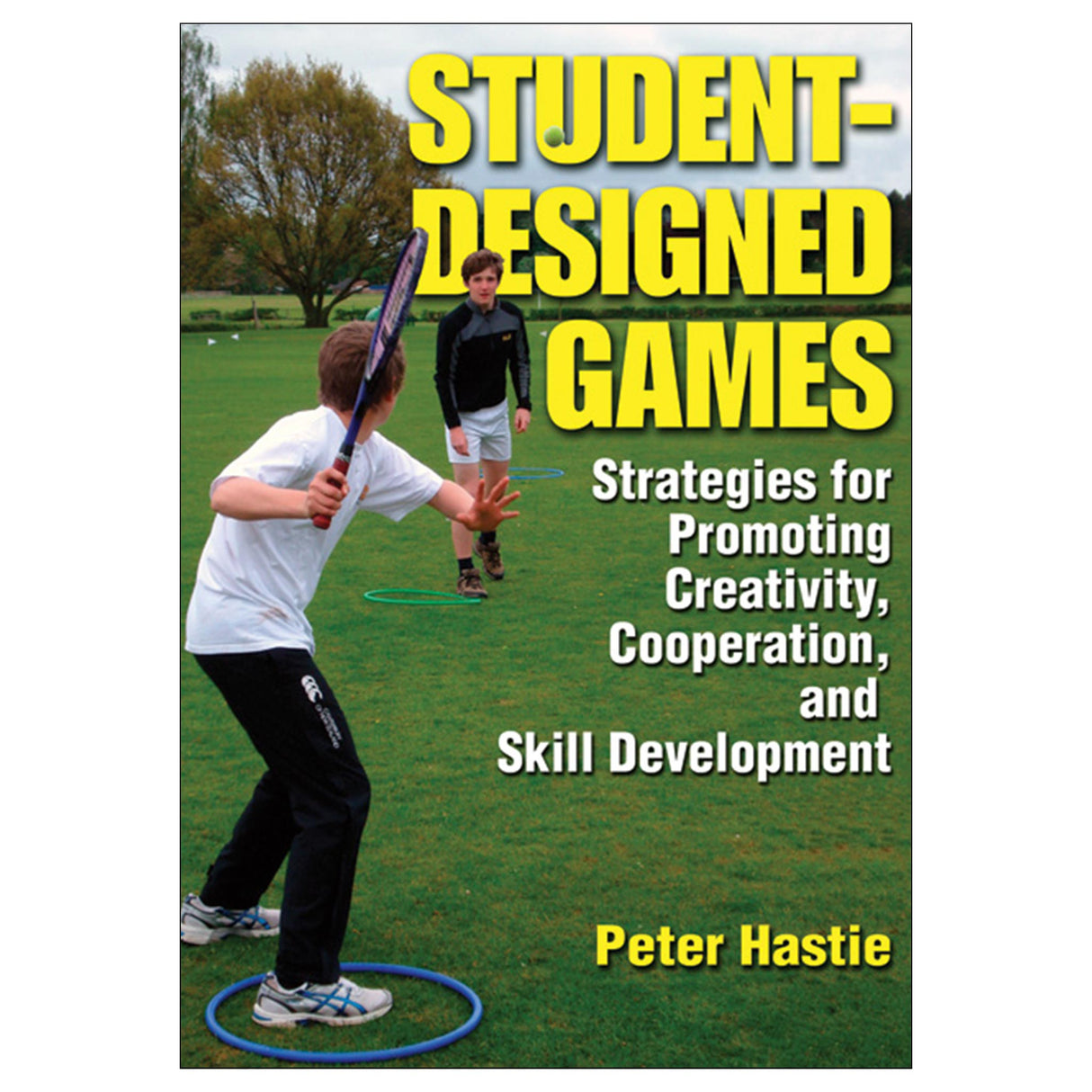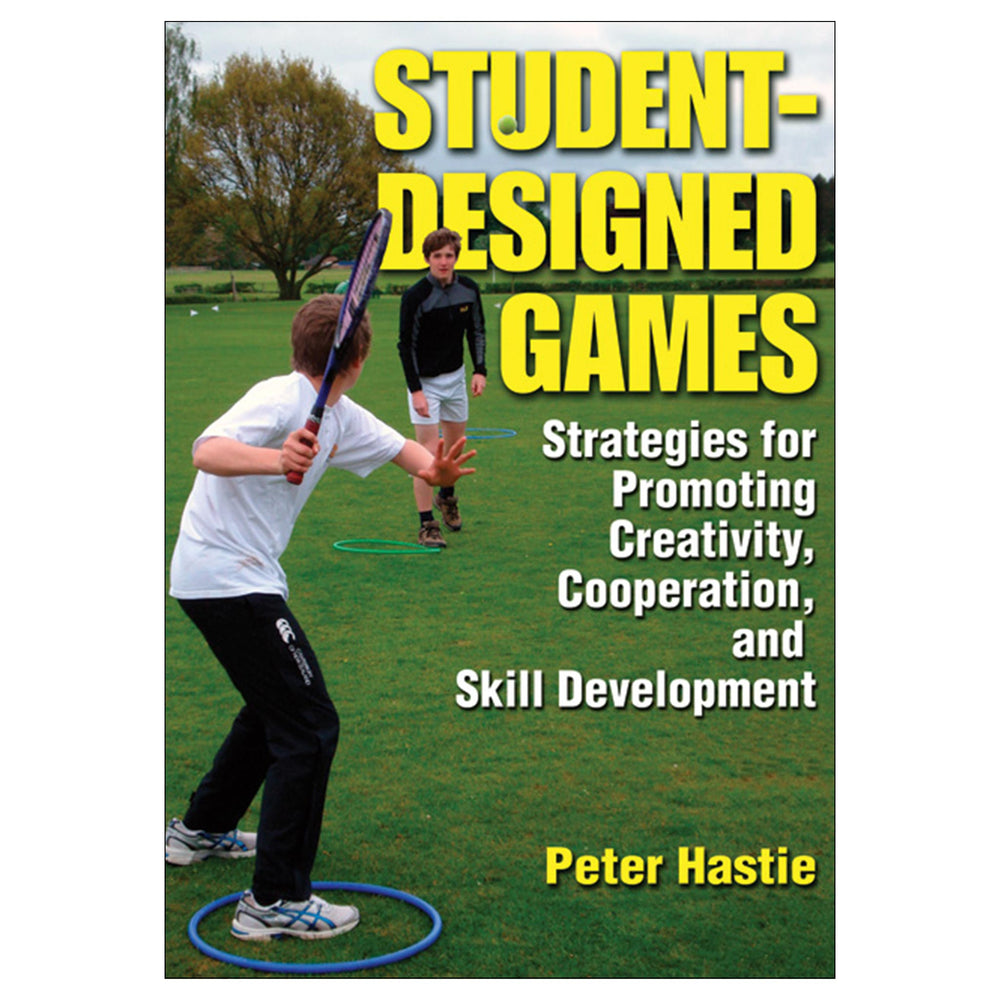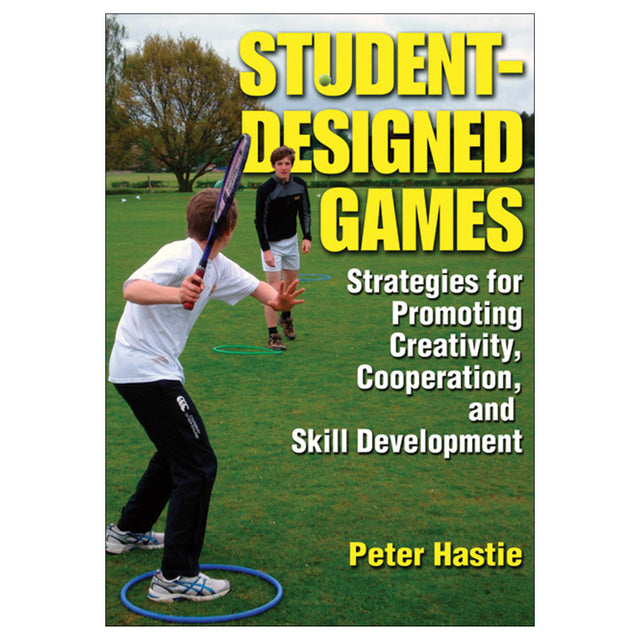Student-Designed Games
Strategies for Promoting Creativity, Cooperation, and Skill Development
Author: Peter Hastie
$19.00 CAD
Students love games, but unfortunately, games are often taught in ways that alienate or exclude less-skilled students. Or worse yet, students find the games boring because they have no voice in how the games are played.
Student-Designed Games: Strategies for Promoting Creativity, Cooperation, and Skill Development helps teachers and youth leaders make games fun again. This innovative, step-by-step guide helps students from early elementary school through college design their own games. In doing so, students
• develop tactical understanding as they design games;
• feel ownership and are more motivated to take part in the games;
• feel included because they have a voice in the scoring, equipment, space, and rules, all of which are limited only by their imagination and available resources; and
• learn how to respect competitors and work toward common goals with partners.
Through Student-Designed Games, students discover why rules are important, work cooperatively through the creative process, solve problems, and teach each other as well as their teachers. In games-making units, students design games within parameters presented by the teacher. They can adapt games they already play by changing various elements, or, with the help of game templates, create unique games that present new tactical problems that players must solve or overcome.
The games can all be connected to standards for becoming physically educated as defined by local, national, and international organizations and include ready-to-use assessments so that teachers can evaluate both the students and the games. The book also includes rubrics to help students understand their responsibilities during the game-making process and to judge the quality of the games they have created.
Student-Designed Games is the perfect book to help students be inclusive and creative, learn basic game forms, improve skills, and have great fun in devising their own games. Teachers will be aided in managing their classes through the detailed management strategies aimed at including their students’ time on task. As such, Student-Designed Games is a valuable addition to teachers’ class resources.
Audience
Text for 1- and 2-credit courses on teaching games. Supplemental text for 3- and 4-credit teaching methods courses. Resource for K-12 physical education teachers as well as recreation and youth group leaders.
Part I: Getting Started
Chapter 1. An Introduction to Student-Designed Games
A Brief Theory of Student-Designed Games
What Makes a Good Game?
What Student-Designed Games Are Not
Getting Started With Student-Designed Games
References
Chapter 2. Educational Benefits of Student-Designed Games
Games Making and the Physically Educated Person
Games Making and Cooperative Learning
Games Making and Student Motivation and Engagement
Conclusion
References
Chapter 3. Instructional Strategies for Games Making
Choose Outcome Goals
Decide Type of Game and Student Choice
Set Up Small Learning Groups
Present the Challenge
Provide Time to Explore and Experiment
Provide Time to Play
Review
The Role of the Teacher
Conclusion
References
Chapter 4. Understanding Games
What Is a Game?
Classifying Games
Classifying Games According to Their Tactics
Tag Games
Target Games
Invasion Games
Striking and Fielding Games
Net and Wall Games
Conclusion
References
Part II: Designing Basic Games
Chapter 5. Tag Games
Key Principles of Tag Games
Required Experiences for Success in Tag Games
Key Strategies for Success in Tag Games
Sample Tag Games
Poor Tag Games
Safety in Tag Games
Questions to Consider When Designing Tag Games
A Template for Designing Tag Games
Conclusion
References
Chapter 6. Target Games
Key Principles of Target Games
Required Experiences for Success in Target Games
Key Strategies for Success in Target Games
Sample Target Games
Poor Target Games
Safety in Target Games
Questions to Consider When Designing Target Games
A Template for Designing Target Games
Conclusion
References
Chapter 7. Invasion Games
Key Principles of Invasion Games
Required Experiences for Success in Invasion Games
Key Strategies for Success in Invasion Games
Sample Invasion Games
Poor Invasion Games
Safety in Invasion Games
Questions to Consider When Designing Invasion Games
A Template for Designing Invasion Games
Conclusion
References
Chapter 8. Striking and Fielding Games
Key Principles of Striking and Fielding Games
Required Experiences for Success in Striking and Fielding Games
Key Strategies for Success in Striking and Fielding Games
Sample Striking and Fielding Games
Poor Striking and Fielding Games
Safety in Striking and Fielding Games
Questions to Consider When Designing Striking and Fielding Games
A Template for Designing Striking and Fielding Games
Conclusion
Reference
Chapter 9. Net and Wall Games
Key Principles of Net and Wall Games
Required Experiences for Success in Net and Wall Games
Key Strategies for Success in Net and Wall Games
Sample Net and Wall Games
Poor Net and Wall Games
Safety in Net and Wall Games
Questions to Consider When Designing Net and Wall Games
A Template for Designing Net and Wall Games
Conclusion
References
Part III: Moving Beyond Basic Games
Chapter 10. Conversion Games
Hybrid Games
Relocation Games
Transformation Games
Conclusion
Reference
Chapter 11. Cooperative Games
Collective Scoring
Reversal Games
Components of Cooperative Games
A Template for Designing Cooperative Games
Conclusion
References
Chapter 12. Assessment in Student-Designed Games
What to Assess in Student-Designed Games
How to Assess Student-Designed Games
Evaluating Games
Conclusion
References





